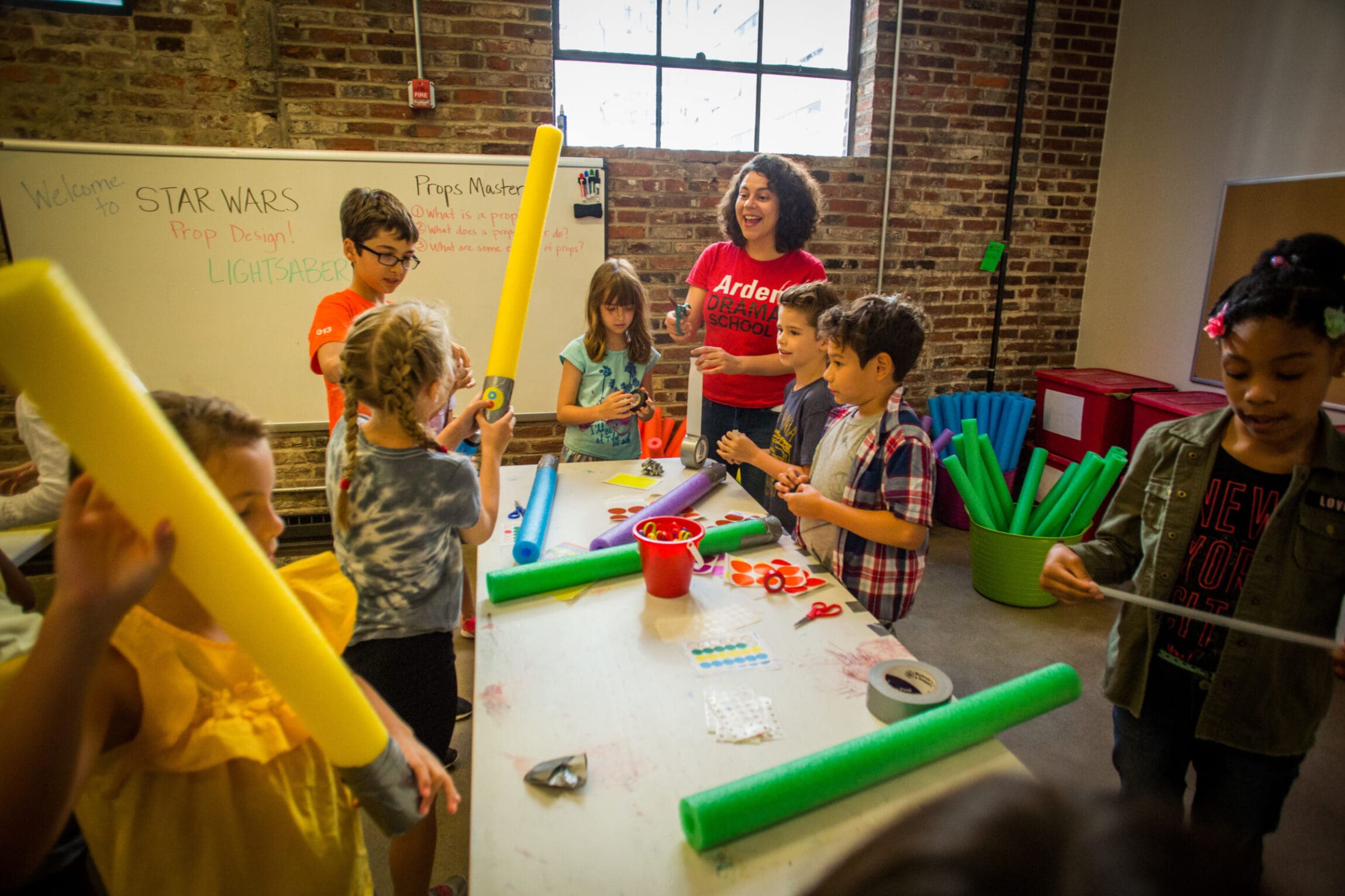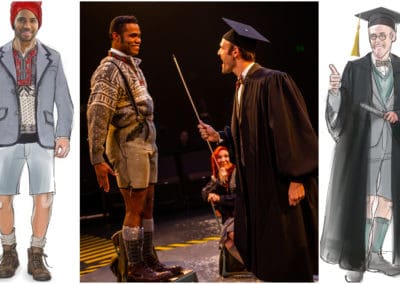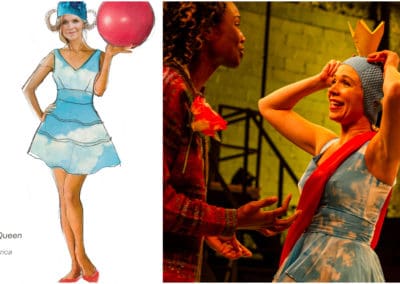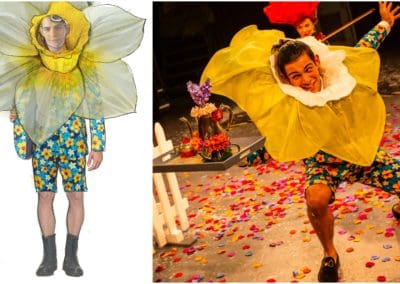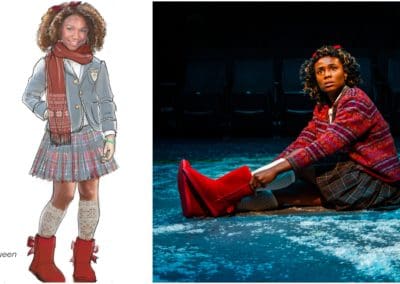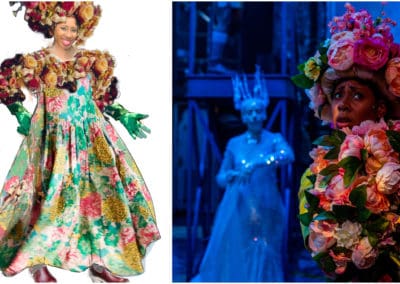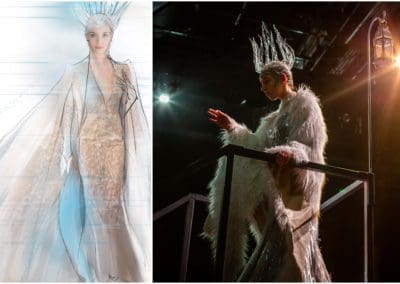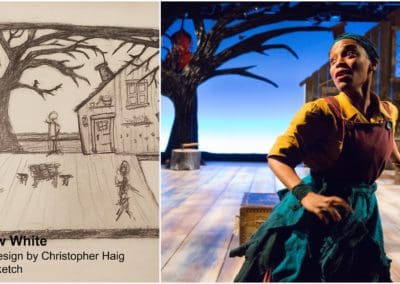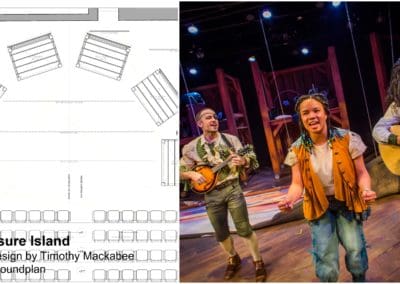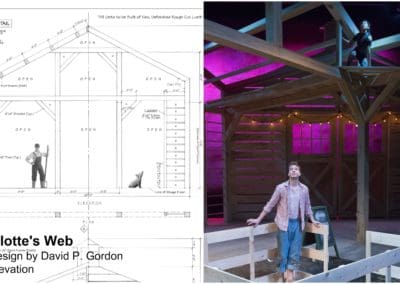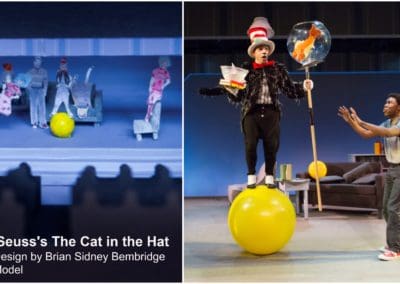Arden for All ONLINE! – Let’s Create
Join us for an imaginative theatrical design lesson for elementary-aged students and their parents.
Get Inspired
So many people collaborate, or work together, to bring a play to life! You can see the actors performing on-stage when you visit the theatre. There are also many other people including directors, stage managers, and designers working to create a show. Today we will be learning about DESIGNERS.
Before we begin, you can watch an Arden Children’s Theatre trailer for inspiration!
The Snow Queen (2019/20)
Charlotte’s Web (2018/19)
Dr. Seuss’s The Cat in the Hat (2013/14)
Costume Design
A character’s costume can tell the audience so much about who they are! COSTUME is just another word for the clothing the actors wear on-stage. When you dress-up for Halloween, you are using an outfit to transform who you are, and the actors are doing the exact same thing in a play.
The Costume Designer decides what each actor will wear in the show. To get their ideas on paper, they create a colored sketch called a RENDERING. This costume rendering is used as the guide to make the clothing you see in the play. Take a look at these page-to-stage comparisons for The Snow Queen costumes, which were designed by Olivera Gajic!
Now, it’s your turn to be a Costume Designer! Here are the instructions:
1. Choose a character. This can be a character from your favorite story, or you can make up your own.
2. Close your eyes, and use your imagination to see your character. To get you thinking, try answering these questions:
- What season is it? For example, are they wearing a winter coat or summer shorts?
- What colors represent your character’s personality? For example, would they wear happy bright colors or gloomy dark colors?
- What does your character do? For example, are they a superhero or a student?
3. Use the Costume Design worksheet HERE to create your very own costume rendering using crayons, markers, colored pencils, or paint!
Need a challenge? Bring your costume rendering to life by finding clothing or materials around your home that look like your design. Dress-up and give your own page-to-stage presentation.
Need to simplify? If you’re designing with a younger student, choose a character that they already know and love. Focus on major costume features, such as what color they wear.
Set Design
The set is usually the first thing you see when you walk into the theatre for a show! SET is short for the word “setting,” which is the environment where the story takes place. Look around the room, and see if you can identify elements of your current setting. For example, if you are in your living room you might see a couch, lamp, or television.
In the Arden’s production of Charlotte’s Web last season, the play took place on a farm. The set looked like a barn, and everything was made out of unpainted wood. There was even real dirt and hay for Wilbur’s pig pen!

In the Arden’s production of Dr. Seuss’s The Cat in the Hat in 2014, the play took place in the home of the boy and girl, so the set looked like a living room. We can’t wait to put on a new version next season!
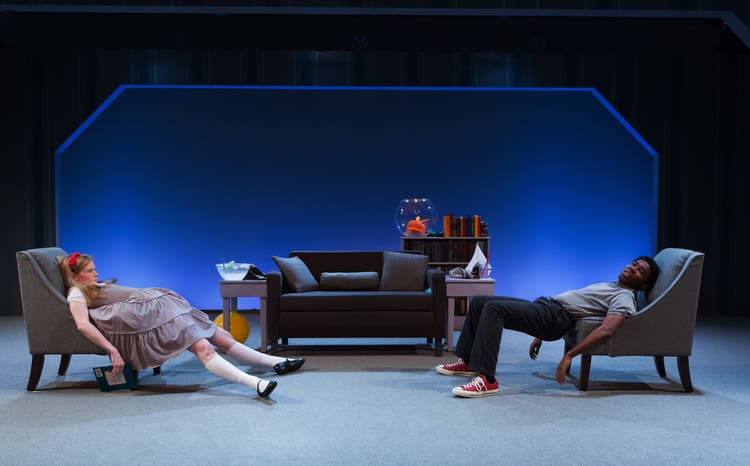
A set can also be surprising. For example, when you think about the setting of Peter Pan, you might imagine the Darling’s bedroom or Captain Hook’s pirate ship in Neverland. However, in the Arden’s production of Peter Pan, the story took place at a campground. Take a tour!
The Set Designer decides what the world of the play will look like. To get their ideas on paper, they sketch and create a RENDERING, just like Costume Designers. They also make a MODEL, which is a miniature representation of the set, along with special drawings such as a GROUNDPLAN and ELEVATIONS that show exactly how big everything is and how it is built. Take a look at these page-to-stage comparisons for Arden Children’s Theatre set designs!
Now, it’s your turn to be a Set Designer! Here are the instructions:
1. Choose a setting. This can be the place your Costume Design character lives, or you can make up a new setting.
2. Close your eyes, and use your imagination to see your set. To get you thinking, try answering these questions:
- Where are you? For example, are you in a forest, on the moon, or in a school?
- What is the time period? For example, are you in the Wild West or in the future with robots and flying cars?
- What happens there, and what do you need? For example, if cooking takes place in a kitchen, do you need an oven or sink?
3. Use a sheet of paper to draw your very own set rendering using crayons, markers, colored pencils, or paint!
Need a challenge? Create your set in 3-D by making a model. You could use Legos, toilet paper tubes, straws, or anything else you can find around your home.
Need to simplify? If you’re designing with a younger student, choose an easily identifiable environment, and draw it together. For example, you could draw sand dunes and waves for a beach, or you could draw trees and a river for a forest.
After a Set Designer completes their rendering, model, ground plan, and elevations, everything must be built before you can see it on-stage. Check out this video of the Charlotte’s Web barn raising! There’s no sound because it’s been sped up to show you all of the action.
Sound Design
When you visit the theatre, you can see the world of the play through the costumes and set, but you can also hear the world of the play through its sounds! This can include noises such as a thunderstorm or ringing phone, as well as mood music.
The Sound Designer decides what the audience will hear during the play. They make a CUE LIST, which details every noise that happens in the show. Then they record, find, or compose each sound effect and piece of music. Everything is played out of speakers in the theatre, and the audio is operated by a special controller called the MIXING CONSOLE, along with a computer program called QLAB. See all of this equipment in action!
The actors can also create their own sound effects, instead of playing them through the speakers in the theatre. In the Arden’s production of Charlotte’s Web, the story began with each person helping to build the soundscape of the play. Take a peek behind the scenes, and check out this rehearsal footage of the actors waking up the farm!
Now it’s your turn to be a Sound Designer! Create your own design by using the Sound Effects Mad Libs worksheet HERE. Once you’re done, try performing it for someone else in your home.
Need a challenge? Write your own short story that includes sound effects for the character or setting you chose earlier in the lesson.
Need to simplify? If you’re designing with a younger student, prompt them by giving them an animal or specific noise to vocalize. For example, have them make the sound of a dog, rain, or a phone ringing.
Thank you for creating with us today!
We would love to see your any of your designs! Tag us using @ArdenTheatreCo on Facebook or Instagram if you would like to share.

